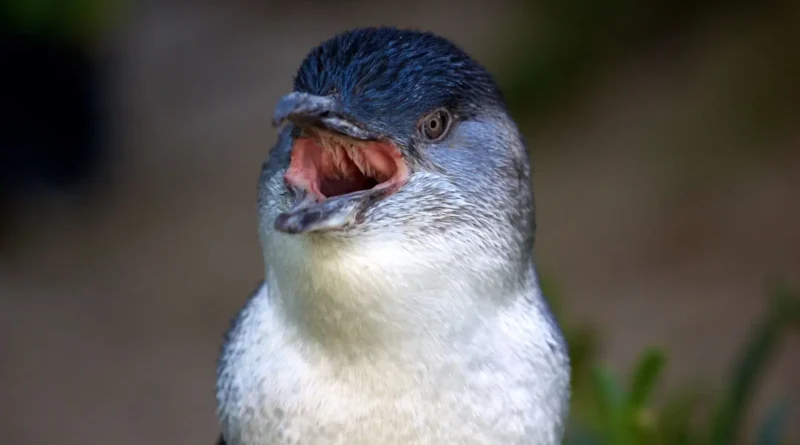Exploring the Inside of a Penguin’s Mouth
Penguins, with their unique adaptations for life in aquatic environments, possess fascinating oral structures that play essential roles in feeding, thermoregulation, and vocalization. In this article, we delve into the anatomy and functions of a penguin’s mouth, exploring the adaptations that enable these iconic birds to thrive in their cold and challenging habitats.
I. Introduction to Penguin Oral Anatomy
A. Overview of Penguin Species
Penguins belong to the family Spheniscidae and are highly adapted marine birds found primarily in the Southern Hemisphere. They exhibit diverse species, ranging from the iconic Emperor Penguin (Aptenodytes forsteri) to the petite Little Blue Penguin (Eudyptula minor).
B. General Oral Structure
The mouth of a penguin comprises several specialized features, including a beak, tongue, and palate, adapted for efficient feeding and diving. Penguins lack teeth, but their beaks are uniquely adapted for catching and swallowing prey underwater.
II. External Features of a Penguin’s Beak
A. Shape and Composition
The beak of a penguin is sharp and pointed, resembling a robust and elongated structure that varies in shape depending on the species. It is composed of keratin, the same material found in human fingernails and hair.
B. Function in Feeding
Penguin beaks serve multiple purposes, from capturing slippery fish to preening feathers and removing parasites. The hooked shape helps secure prey during underwater pursuits, while the serrated edges aid in gripping and tearing food.
III. Internal Oral Structures of Penguins

A. Tongue and Palate
Penguins possess a muscular tongue and a hardened palate that help manipulate food and prevent swallowing seawater while hunting underwater. The tongue’s mobility assists in guiding prey towards the throat.
B. Salivary Glands
Salivary glands in penguins secrete mucous to lubricate food and aid in swallowing. This mucous also helps protect the throat and esophagus from abrasive particles.
IV. Adaptations for Thermoregulation
A. Countercurrent Heat Exchange
Some penguin species, such as the Emperor Penguin, have adaptations in their mouths that facilitate countercurrent heat exchange. Blood vessels in the mouth and throat allow them to conserve body heat while consuming cold seawater.
B. Gular Fluttering
Penguins engage in gular fluttering, a behavior involving rapid movement of the throat muscles, to dissipate excess heat during warm temperatures or after exertion.
V. Specialized Adaptations for Diving and Swimming
A. Prevention of Water Ingestion
Penguins have a unique ability to close their nostrils and flatten their tongue against the roof of their mouth, preventing water from entering the respiratory system while underwater.
B. Air Compression
Before diving, penguins may expel excess air from their lungs, which helps reduce buoyancy and enhances their ability to reach deeper depths while foraging.
VI. Vocalization and Communication
A. Role of the Syrinx
Penguins produce a variety of vocalizations using their syrinx, a vocal organ located near the trachea. These vocalizations serve multiple purposes, including mate attraction, territorial defense, and parent-offspring communication.
B. Vocal Repertoire
Different penguin species exhibit unique vocal repertoires, ranging from trumpeting calls to melodious songs, each with specific meanings and social contexts.
VII. Pathological Conditions and Oral Health
A. Diseases and Infections
Penguins, like other birds, are susceptible to oral diseases and infections caused by bacteria, viruses, and parasites. These conditions can affect feeding behavior and overall health.
B. Dental Abnormalities
While penguins lack teeth, they may experience dental abnormalities related to beak deformities or wear, affecting their ability to capture and process food efficiently.
VIII. Conservation Implications and Research Efforts
A. Monitoring Oral Health in Wild Populations
Conservationists and researchers monitor oral health in wild penguin populations to assess environmental impacts and disease prevalence, providing insights into overall ecosystem health.
B. Future Research Directions
Future research on penguin oral anatomy and adaptations may focus on understanding the impact of climate change, pollution, and habitat loss on oral health and feeding behaviors.
IX. Conclusion
Exploring the inside of a penguin’s mouth reveals a complex array of adaptations designed for life in the aquatic realm. From specialized beaks for catching prey to physiological mechanisms for thermoregulation and vocalization, penguin oral anatomy exemplifies nature’s ingenuity in adapting to challenging environments.

